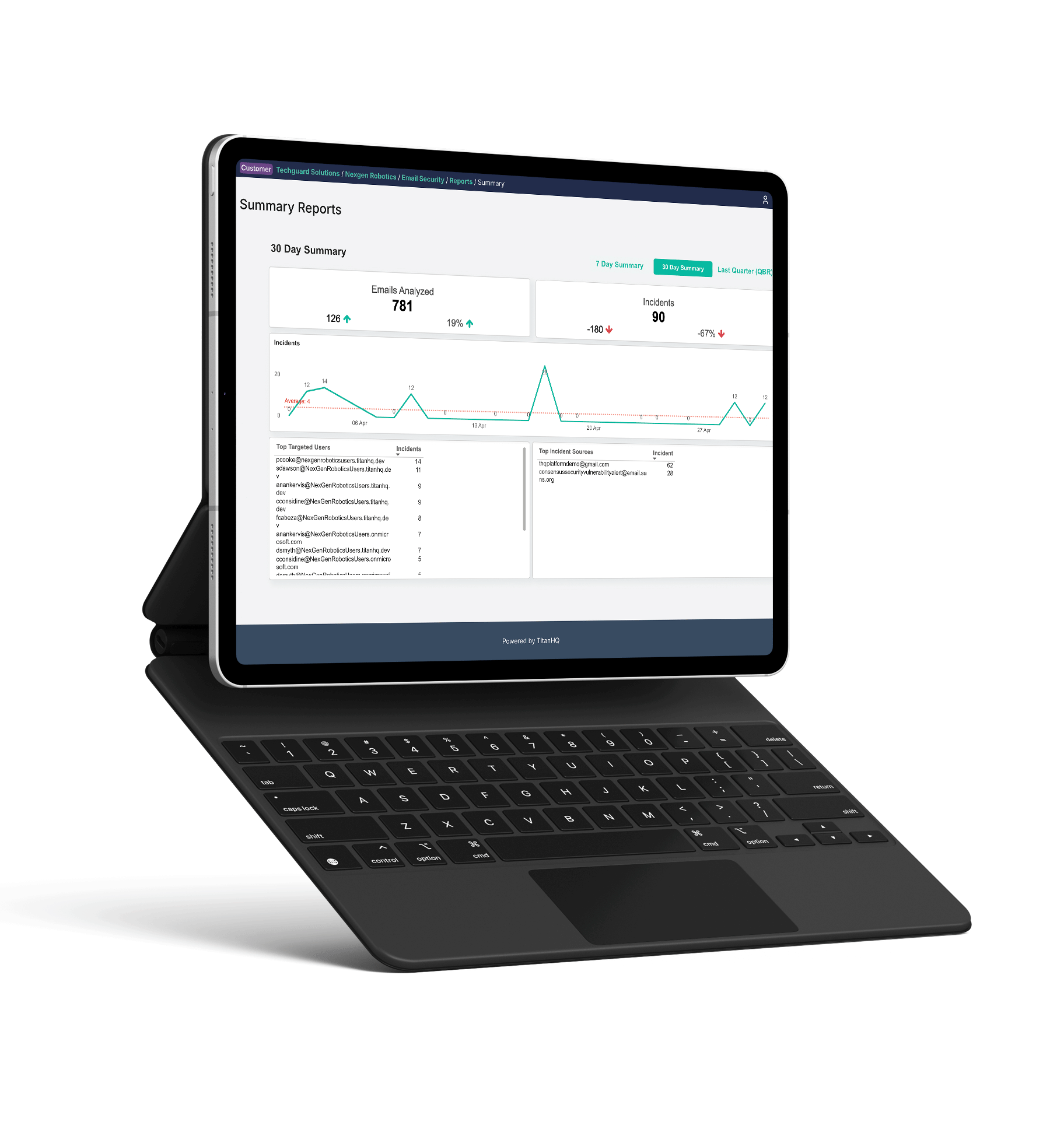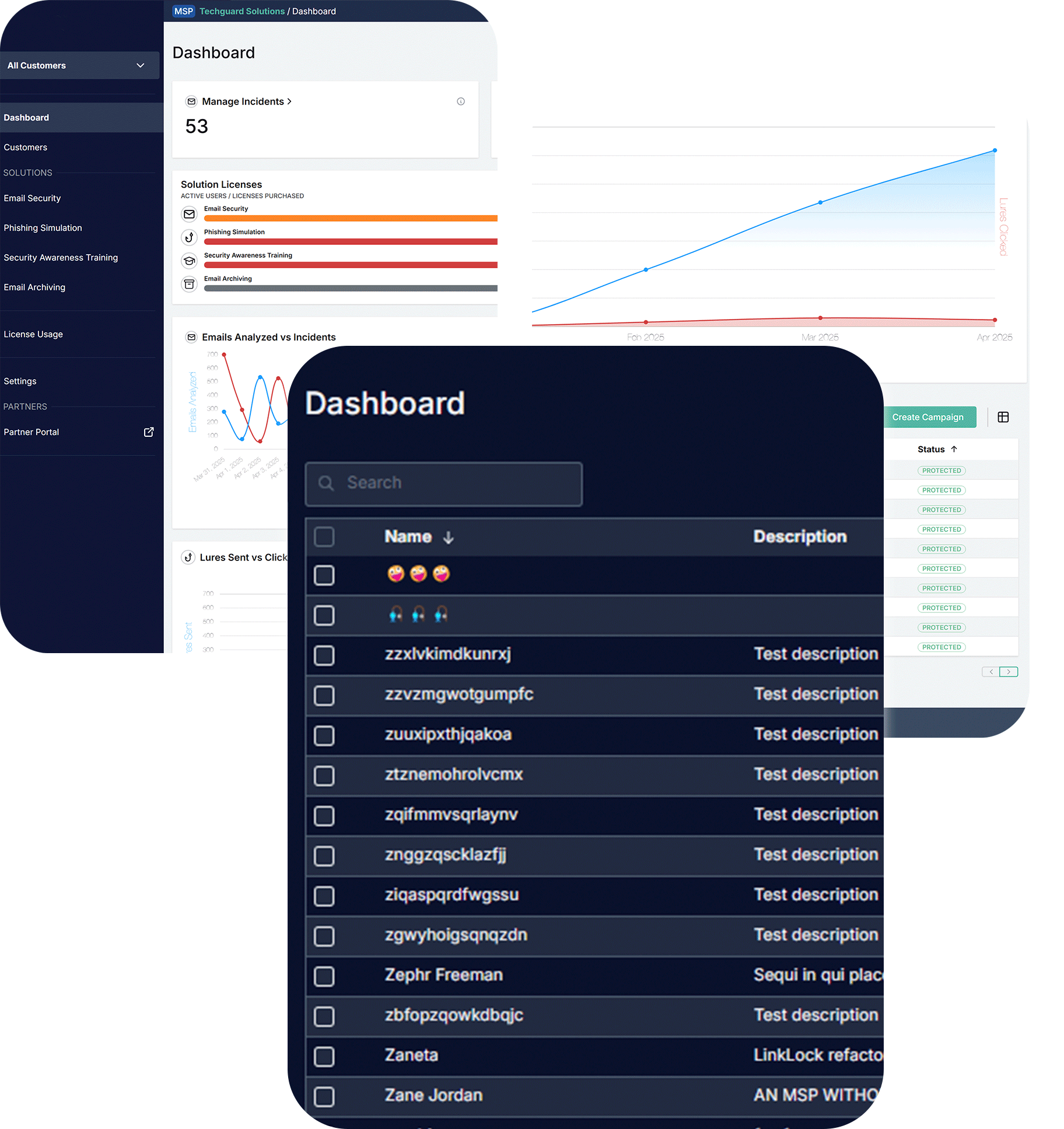Why do organizations need phishing protection?
Phishing works: The intersection of technology and human behaviour has taken this intrinsically simple idea to heights of cyberattack success. Phishing is behind credential theft, ransomware infections, malware attacks, Business Email Compromise (BEC) scams, and data breaches. According to a 2025 study from TitanHQ and Osterman Research, 64.3% of businesses expect phishing threats to rise in the year ahead.
Behind the recent successes of phishing lies advanced tactics that utilize AI and evasive tactics. Large language models (LLMs), as used by platforms like ChatGPT and Claude, are being misused to identify targets, locate sensitive information, and craft highly believable and personalized phishing emails. AI is also used to automate and scale phishing campaigns. LLM-generated phishing emails have a click-through rate of 30–44% and some LLM-generated phishing attacks have a click-through rate of over 80%.
One click can cost a company $4.65 million when stolen credentials or malware lead to a data breach.
Advanced phishing prevention significantly reduces the risk associated with an employee clicking a malicious link.
How is phishing detected and prevented?
Advanced phishing protection employs multiple layers of security measures to prevent phishing emails from reaching inboxes or tricking employees and others into performing actions that result in a cyber incident.
Advanced phishing solutions integrate seamlessly into an email service, such as Outlook 365. A phishing filter is configured to detect phishing signals in emails. Once a phishing email is detected it’s automatically sent to quarantine or deleted. Integrated Cloud Email Security (ICES) is an advanced anti-phishing measure that uses machine learning and natural language processing (NLP) to identify sophisticated phishing tactics.
Phishing detection and prevention solutions are used in conjunction with other security measures, including security awareness training, phishing simulations, DNS filtering, and email backup solutions.


AI-powered phishing protection and M365
Cybercriminals are increasingly utilizing AI to improve the believability of phishing and automate campaigns. Next-generation email threat detection also utilizes AI. One of the innovations in anti-phishing technology is the use of Natural Language Processing (NLP) to identify the intent of an email. Modern phishing tactics often employ multiple phishing emails to conceal their true intentions. This tactic can make it hard to identify tell-tale signs of phishing. AI-powered phishing protection can determine if an email is trying to deceive or manipulate a recipient. Another innovative application of AI in phishing detection is the use of machine learning to identify emerging attack patterns and zero-day threats.
The Osterman report concludes that companies and MSPs must use AI to enhance their cybersecurity posture. The report also found that 79% of respondents believe that email security solutions must use defensive AI measures.
This AI-enabled advanced phishing protection extends to augmenting native email security in M365. Gaps in M365 security have been identified that allow nearly 20% of phishing emails to evade detection by Microsoft 365 Exchange Defender and Microsoft Exchange Online Protection (EOP).
Adding an integrated layer of AI-powered phishing prevention to M365 significantly improves the catch rate and reduces security risk.
Did you know?
cyber attacks begin with phishing
of SMBs with 10+ days of data loss shut down within 6 months
estimated global cybercrime cost
cost 295 days to stop & spot a phishing attack
Features of advanced phishing protection
AI-powered threat detection
Machine learning identifies patterns in attack tactics, techniques, and processes. Learning is continuous and always-on, allowing the ML algorithm to identify emerging attacks and zero-day threats.
Natural language processing (NLP)
Email phishing is increasingly personalized. Often, phishing messages are targeted and may not contain the typical signs of phishing, such as a malicious link. NLP identifies threats by analyzing intent and context. NLP helps to identify social engineering and multi-part phishing campaigns. The NLP engine analyzes email content, looking for indicators of compromise that are formed around specific language patterns.
Real-time threat analysis
AI-powered anti-phishing examines malicious links in emails and checks the spoof websites associated with phishing campaigns. If the website is found to be legitimate, the email will be released to the user’s inbox. If not, an administrator can test the email content and attachments in a secure environment, using the insights gained from the analysis to inform algorithm training.
URL rewriting and analysis
URL analysis is used to validate the security of the URL against multiple curated anti-phishing feeds. URL rewriting is real-time to prevent navigation to malicious websites.
Link Lock service
A service that ensures the company remains protected even if a recipient clicks a URL in a malicious email.
Auto-remediation
This technique is an additional layer of risk mitigation and enhanced protection. Suspicious emails are automatically remediated using various methods, including quarantine. Administrators are alerted at the point of auto-remediation.
Data loss prevention (DLP)
DLP prevents sensitive data from leaving the corporate network, whether intentionally or unintentionally.
API for integration
Integration with M365 and other email clients ensures seamless phishing prevention without disrupting working patterns.
Unified multiple-layered security with advanced phishing protection
Unified email security solutions are used to build layers of protection to reduce security risk further. The following measures are used to augment advanced phishing protection:
Security awareness training and phishing simulations
Training for all employees to help them identify phishing and change risky security behaviors.
DNS filtering
Helps to block access to malware, phishing sites, and risky content.
M365 and Entra ID backup and recovery
One-click granular backup and recovery for the Microsoft environment.


Phishing protection for an MSP
AI-powered phishing campaigns are expected to grow in volume and complexity. Advanced phishing protection is a crucial security measure that uses AI technology to detect emerging and evasive email threats. Using advanced phishing protection as part of a unified security solution, alongside security awareness training, ICES, and email backup and recovery, ensures that your customers have the best possible protection and that you have the best possible offering.
An MSP should go beyond the core features of an advanced phishing protection solution to include three key capabilities:
Multi-tenant management
A centralized, cloud-based console that lets MSPs manage all customers in one place, reducing administrative overhead.
Automated protection
Fast, automated onboarding to quickly add new accounts without manual complexity.
Cross-sell readiness
Seamless bundling with Microsoft 365, Azure Blob, and Entra ID to increase value and margins.
Ready to get started?

